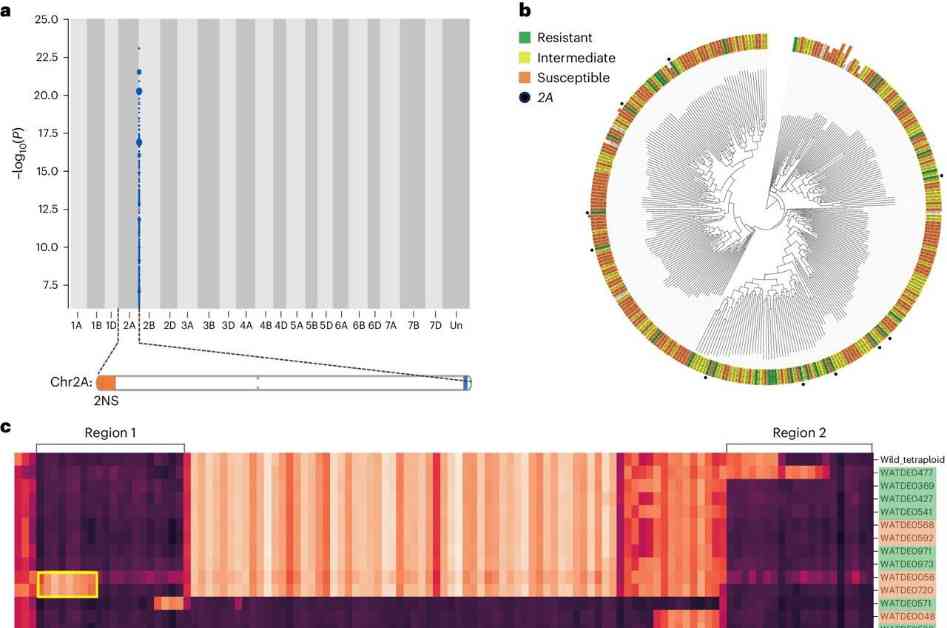A recent study published in the journal Nature Plants has shed light on a surprising source of hope in the fight against wheat blast, a devastating fungal disease that poses a serious threat to global food security. The research, led by the John Innes Centre in collaboration with the University of Zürich, has uncovered a link between resistance to powdery mildew and protection against wheat blast in certain wheat varieties.
Traditionally, efforts to combat wheat blast have focused on identifying resistance genes in wheat varieties from humid sub-tropical regions, where the disease is most prevalent. However, this new study challenges that approach by highlighting the potential benefits of looking at resistance in wheat varieties that have been developed to withstand other diseases, such as powdery mildew, which typically occurs in colder climates.
The researchers identified a gene, Pm4, located on chromosome 2A of the wheat genome, that provides resistance to both powdery mildew and certain strains of the blast fungus containing the effector AVR-Rmg8. This discovery suggests that wheat varieties bred for resistance to powdery mildew in regions like Europe could also offer protection against wheat blast, even in high-temperature, high-humidity environments.
According to Professor Paul Nicholson, a group leader at the John Innes Centre, the findings of the study were unexpected and highlight the importance of exploring resistance in diverse wheat varieties from different geographic regions. The research team screened over 300 wheat varieties from the Watkins Collection and found that only 3% showed resistance to wheat blast, with all highly resistant varieties carrying the Pm4 gene.
Moving forward, the researchers plan to search for additional resistance genes in European-bred wheat varieties to further enhance the genetic arsenal against wheat blast. Dr. Tom O’Hara, the lead author of the study, noted that the identification of the Pm4 gene as a key resistance factor could have significant implications for breeders looking to develop blast-resistant wheat varieties for regions like Bangladesh.
The unexpected discovery of the link between powdery mildew resistance and wheat blast protection underscores the importance of exploring novel sources of resistance in the ongoing battle against this destructive disease. By expanding the search for resistance genes to include varieties from different climatic regions, researchers hope to develop more robust and durable solutions to combat wheat blast and safeguard global wheat production.


